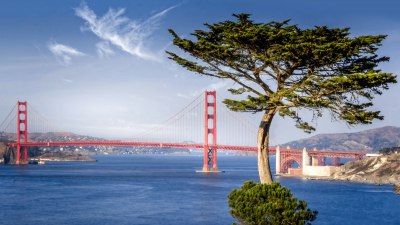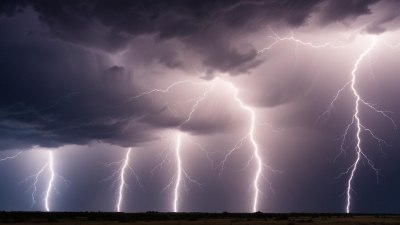Why That Famous Landmark Is Always More Exhausting to Reach Than Expected
Explore the reasons why famous landmarks can be deceivingly exhausting to reach and how to prepare for the journey.

Traveling to famous landmarks is often a dream come true for many. However, the excitement can quickly turn into exhaustion. It is a shared experience among tourists that the journey to these iconic sites is frequently more challenging than anticipated. Understanding the reasons behind this sensation can not only prepare us mentally but also enhance our enjoyment of the trip. In this article, we will explore various factors that contribute to the perception of difficulty when reaching famous landmarks and provide tips on how to manage expectations and prepare accordingly.
The Illusion of Proximity
One common factor is the illusion of proximity that many famous landmarks create. When viewing a location in pictures or on maps, it appears to be within easy reach. This perception is intensified with the use of technology, as digital maps can sometimes mislead us about distances. For example, the Eiffel Tower looks magnificent and easily accessible in images, but once you get there, you may find yourself facing long lines and significant walking distances. The compactness of images can create an expectation that the landmark is just around the corner, which can lead to disappointment when reality sets in.
The Journey Can Be Misleading
Moreover, the journey itself can be misleading. The heart of the landmark experience often lies not just in reaching the site itself, but in the path that leads there. Many famous landmarks are situated in bustling urban areas or remote natural settings that require substantial effort to reach. Hiking to a national park monument, for instance, might seem like a straightforward task on paper. However, the terrain, altitude, and weather conditions can significantly affect your energy levels. Map apps often underestimate the time it takes to climb hills or navigate crowded streets. This discrepancy can catch travelers off guard, amplifying feelings of fatigue and frustration.
Mental vs. Physical Preparation
Another reason is the lack of mental and physical preparation. We often focus primarily on the destination and neglect the necessity of being conditioned for the journey. Visitors may not consider their fitness levels, the weather conditions, or the need for comfortable footwear until they are already on their way. In places where the walking involved is strenuous, such as Machu Picchu or Petra, one can easily become overwhelmed if not adequately prepared. It’s essential to train your body for long walks and research the terrain beforehand to enhance your travel experience. Staying hydrated and being aware of potential fatigue symptoms can help maintain stamina.
Overcrowding and Lines
Another factor that contributes to the exhausting nature of reaching famous landmarks is overcrowding and long wait times. Popular sites tend to attract large crowds, resulting in increased waiting times for access, tours, or photographs. This situation is often exacerbated during peak travel seasons when visitors swarm en masse. Standing in queues can be tedious and exhausting, leading to heightened stress levels and impatience. For instance, attempts to visit the Statue of Liberty often involve long lines and throngs of tourists, transforming the anticipation into a test of endurance. The mental toll of waiting can sometimes outweigh the joy of finally arriving at the destination.
Cultural and Environmental Factors
Cultural and environmental factors also play a significant role in making landmark visits feel more challenging. Different cultures may interpret comfort and convenience uniquely, causing temporary discomfort for travelers. Facilities may not always be designed with tourists in mind, and cultural norms regarding access and navigation can vary widely. It is essential to immerse yourself in local customs and understand the general pace of life at your chosen destination. Additionally, environmental conditions such as altitude, humidity, and temperature can impact your physical capabilities. For example, higher altitudes like those experienced when visiting the Great Wall of China can leave travelers feeling breathless and fatigued. Proper acclimatization is crucial when tackling such famous landmarks.
Emotional Investment
The emotional investment we place in reaching a famous landmark can intensify feelings of exhaustion. The anticipation built up by months—or even years—of dreaming and planning can lead to unrealistic expectations. When the reality of the journey does not match the idealized vision, it can lead to disappointment, which is deeply draining. The emotional letdown can overshadow the excitement of the experience itself. Cultivating a flexible mindset, keeping expectations in check, and embracing each moment of the journey can transform feelings of exhaustion into ones of fulfillment.
The Myth of the Simple Visit
Additionally, there is a myth surrounding the idea that visiting a famous landmark is a straightforward task that merely involves arriving at the location. In reality, landmarks often symbolize complex historical narratives and significant cultural meanings. It may require engagement with surrounding communities, guided tours, or informative exhibits to fully appreciate the landmark's significance. This endeavor involves effort and energy that can unexpectedly contribute to fatigue. Understanding the broader context of what we're visiting—not just the site itself—can enhance our experiences but also requires mental energy.
Planning and Patience
Planning can mitigate some of these challenges. Researching ahead of time can clue you into the best times to visit, any entry fees, and the accessibility of amenities. Having a flexible plan that allows for breaks and downtime is also crucial in managing fatigue. It is permissible to slow down and take in the landscape rather than rush through experiences. Consider scheduling visits during off-peak hours or seasons to avoid the stress of crowds. Early mornings or late afternoons might provide a more serene experience at popular destinations. Always prioritize your comfort during the journey by making sure you have essentials such as snacks, water, and comfortable shoes.
Finding Joy in the Journey
Rather than viewing the journey as merely an obstacle to overcome, reframe it as an integral part of the experience. Many travelers find joy in exploring the eccentricities and charm of a place while making their way to a landmark. Incorporating local cuisine, shopping, or engaging with local culture during your trek can transform it from a laborious task into an adventure. The rich stories and experiences gained along the way often become cherished memories tied to the landmark itself. Exploring the hidden gems that lie in the journey—such as local markets, art installations, or friendly locals—can breathe fresh life into your travel experience.
Reflection and Balance
Finally, reflection plays a key role in navigating the challenges of visiting famous landmarks. Take time to process your feelings about the journey and the emotional highs and lows that accompany it. Balancing the effort spent getting there with the enjoyment of being at the site itself is crucial. Remember it's okay to feel exhausted—it's a natural part of travel. Each landmark visit provides an opportunity for personal growth, cultural exposure, and unforgettable memories. Approaching these hurdles with a mindset geared toward exploration rather than just achievement can add depth to your travels.
In conclusion, the realization that reaching famous landmarks can often be more exhausting than expected is a universal truth among travelers. The illusions, physical challenges, societal factors, and emotional investments can all contribute to our experiences. By preparing adequately, managing our expectations, embracing the journey, and cultivating a reflective mindset, we can enrich our travel experiences and create lasting memories associated with these iconic sites. So, the next time you find yourself on a quest to a celebrated landmark, remember: it’s not just about the destination but also about how you get there. Enjoy the adventure, take your time, and cherish every moment of the journey ahead!











